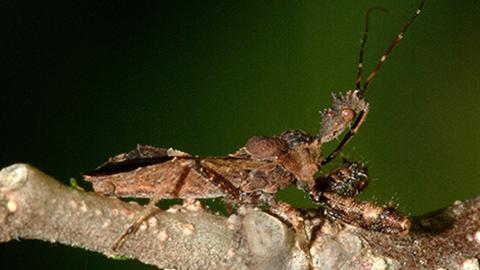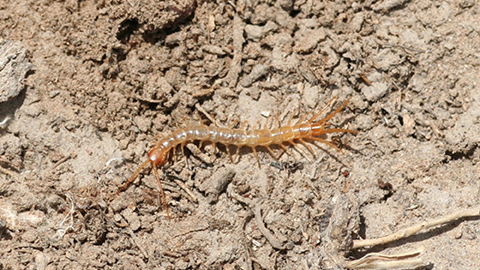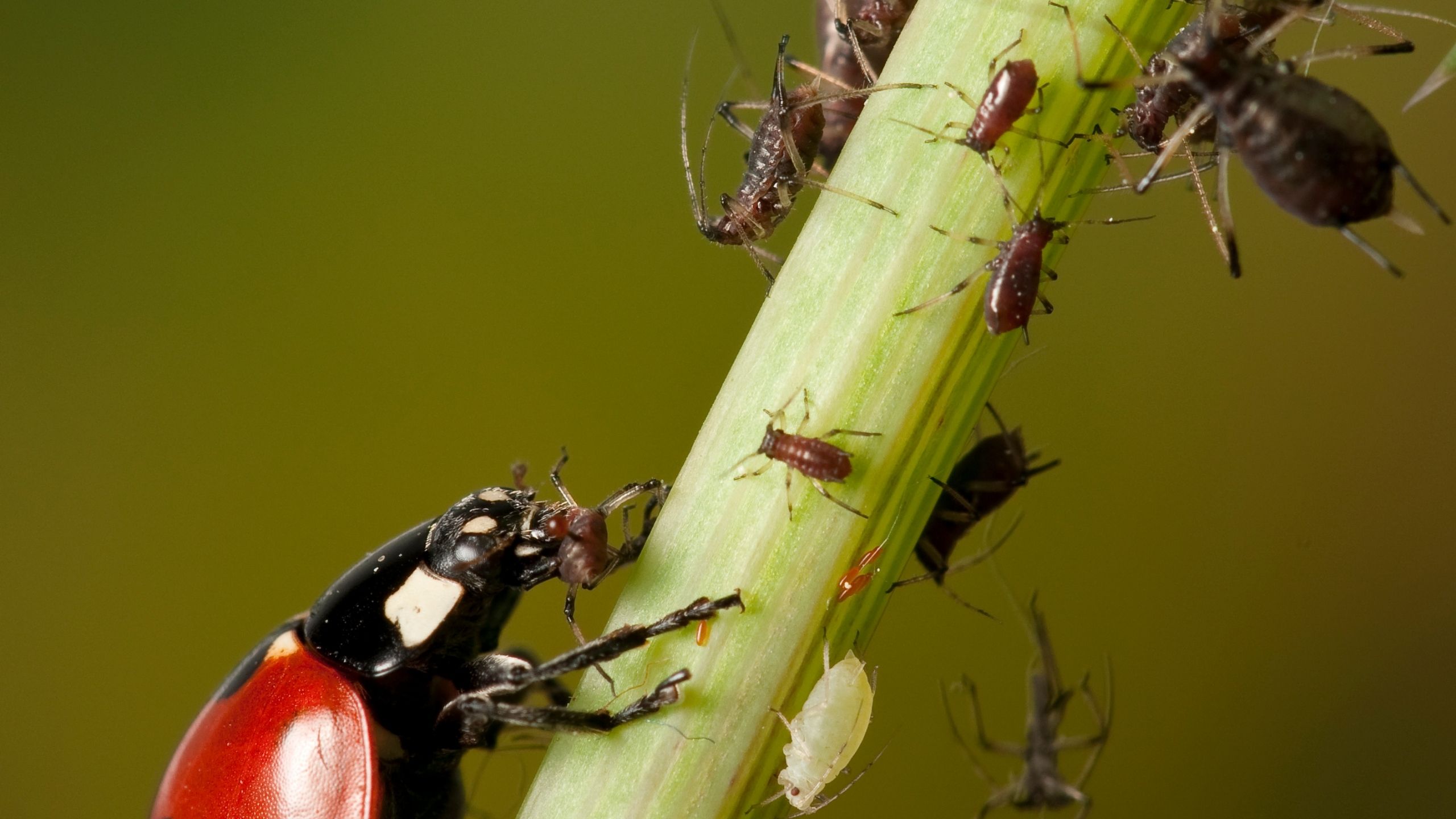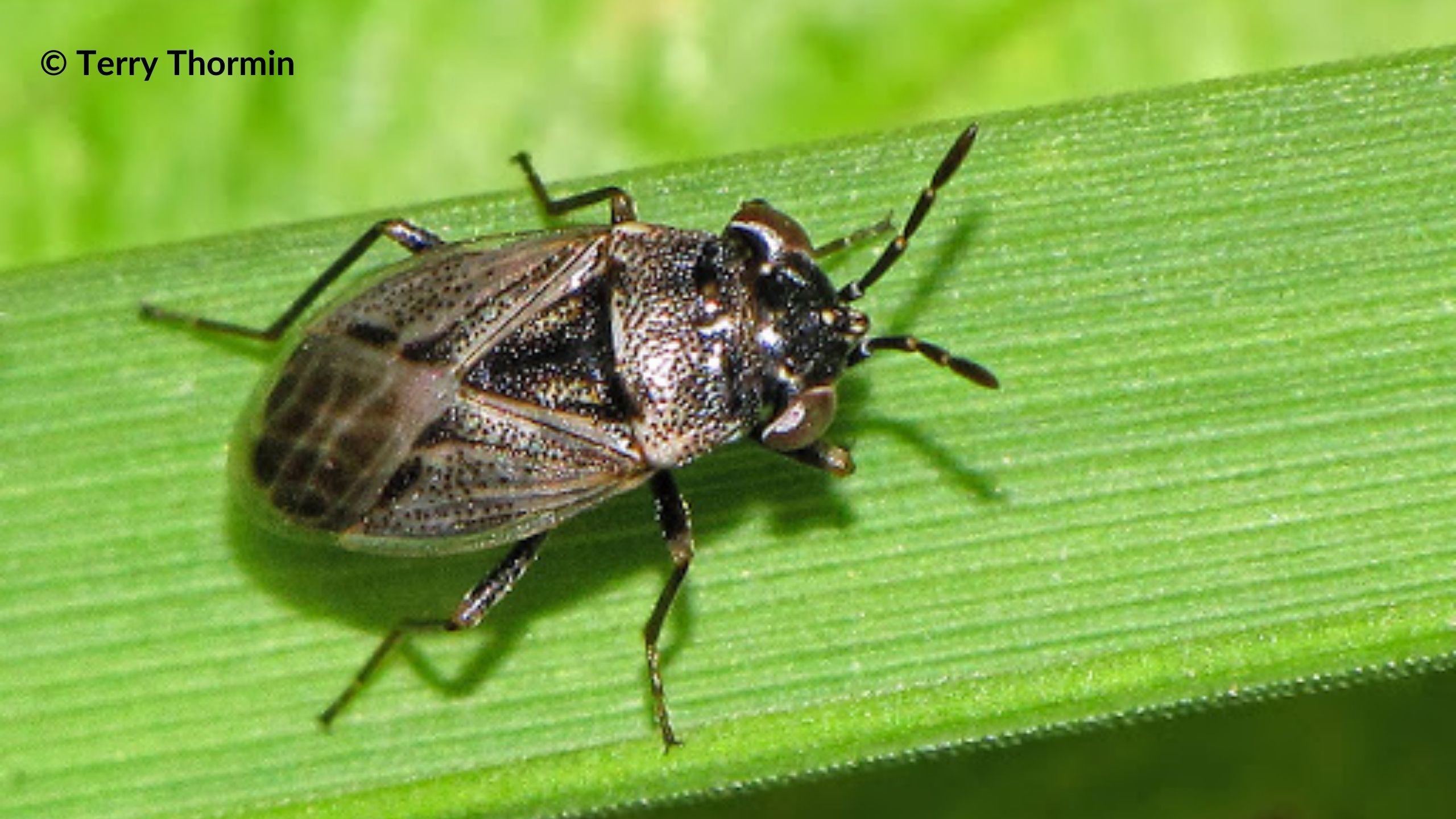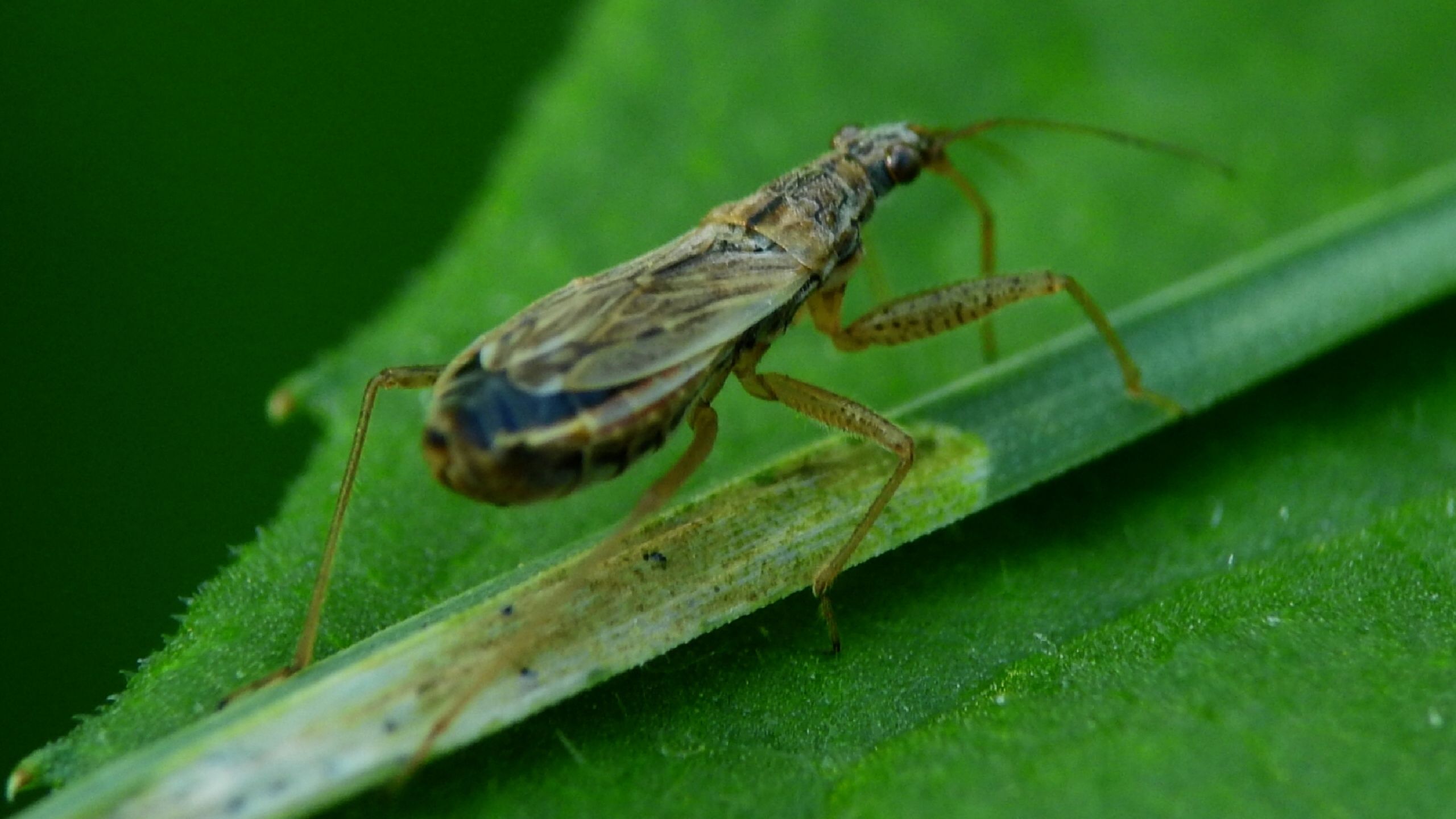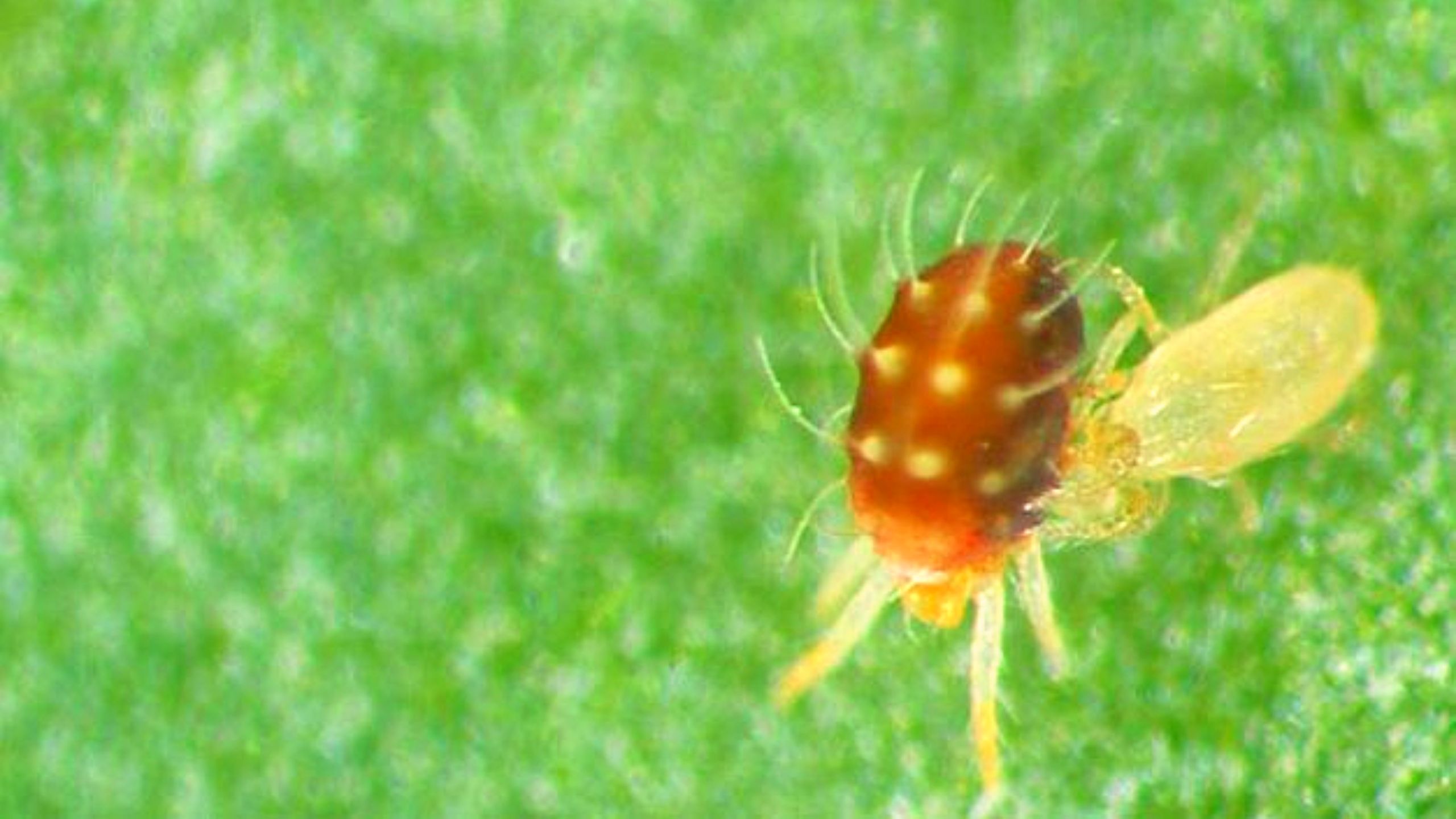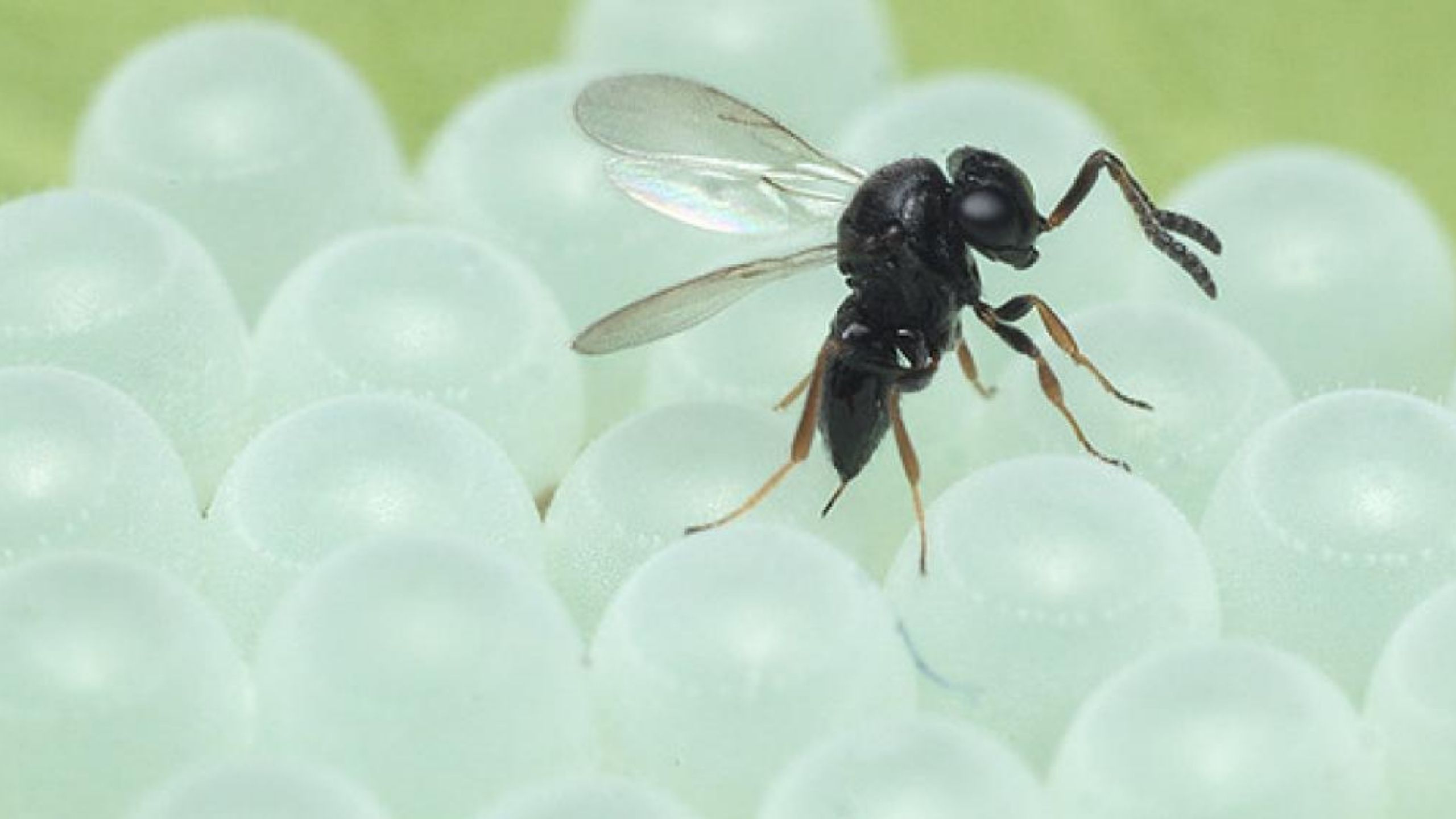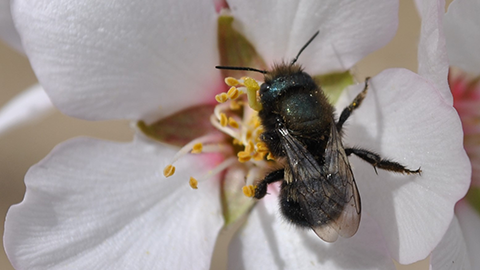Beneficial Insects: Mantids
November 2007
Erin Hodgson, Extension Entomology Specialist (No longer at USU) • Ron Patterson, Carbon County Extension (No longer at USU)
What You Should Know
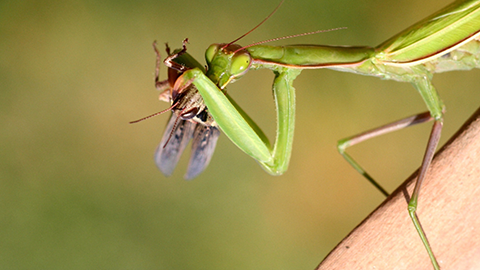
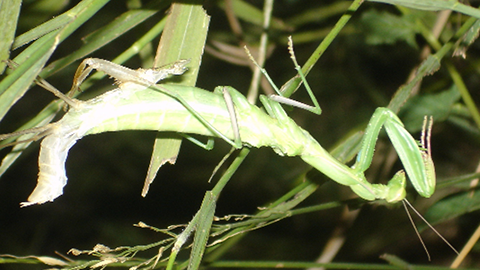
- Mantids are predatory insects common in gardens
and flower beds. - Buying mantid egg cases can provide some pest control, but often nymphs and adults are cannibalistic and indiscriminate carnivores.
- Sometimes mantid egg cases are mistaken for plant disease or harmful pests.
Mantids refer to an entire predatory group of insects in the order Mantodea. The term “mantis” or “praying mantis” actually refers to a particular genus of mantids. Therefore, only some mantids belong to the genus Mantis. There are about 2,000 species of mantids worldwide and at least 20 species in the U.S. Two mantid species dominate Utah gardens: European mantid and Chinese mantid. Often the egg cases are sold commercially to reduce pests in the garden; however, mantids are not the most effective biological control agents. Mantids are not host-specific and will eat almost anything, including pests, pollinators and other beneficial insects (Fig. 1).

Mantid Life Cycle
Mantids are closely related to grasshoppers, crickets and katydids, and go through simple or incomplete metamorphosis (Fig. 2). There is one generation per year. In the fall, mated females will deposit 12-400 eggs in a frothy protective egg case called an ootheca (Fig. 3). Oothecae harden on branches, rocks, or other structures, and are the overwintering stage. In the spring, nymphs will emerge from the ootheca and immediately begin to look for food. Often, mantids are cannibalistic and will eat siblings. Nymphs mature into adults later in the summer.
Adults have an unusual mating behavior, where the females will attempt to eat the male before, during or after copulation. Male mantids are cautionary when approaching females and try to ambush females without being attacked. Males quickly try to maneuver themselves on the females back to successfully mate, but sometimes get eaten anyway. This cannibalistic mating habit probably ensures the female will have enough energy to deposit her oothecae, and this could be seen as “suicide” or a nuptial gift.Mantid Description
Mantids are easily distinguished from other insects because of their large, triangular head and obvious compound eyes (Fig. 4). Mantids can literally look over their shoulders because of a flexible neck and have a large field of vision. But probably the most recognizable body feature is the grasping forelegs, folded under the thorax in a “praying” gesture (Figs. 1, 2). The forelegs strike out and capture prey, and sharp leg spines hold the prey while being crushed by powerful chewing mouthparts. Both the nymphs and adults are predatory and will attempt to eat any insect or arthropod. Adult mantids have wings, but are clumsy flyers; some species have females with reduced wings and rarely fly. Most mantids blend into the background and will camoflage themselves with plant material. This allows mantids to sit on twigs or stems and wait to ambush prey as they pass by. Occasionally, mantids will display a defensive behavior if threatened by a larger animal (Fig. 5).

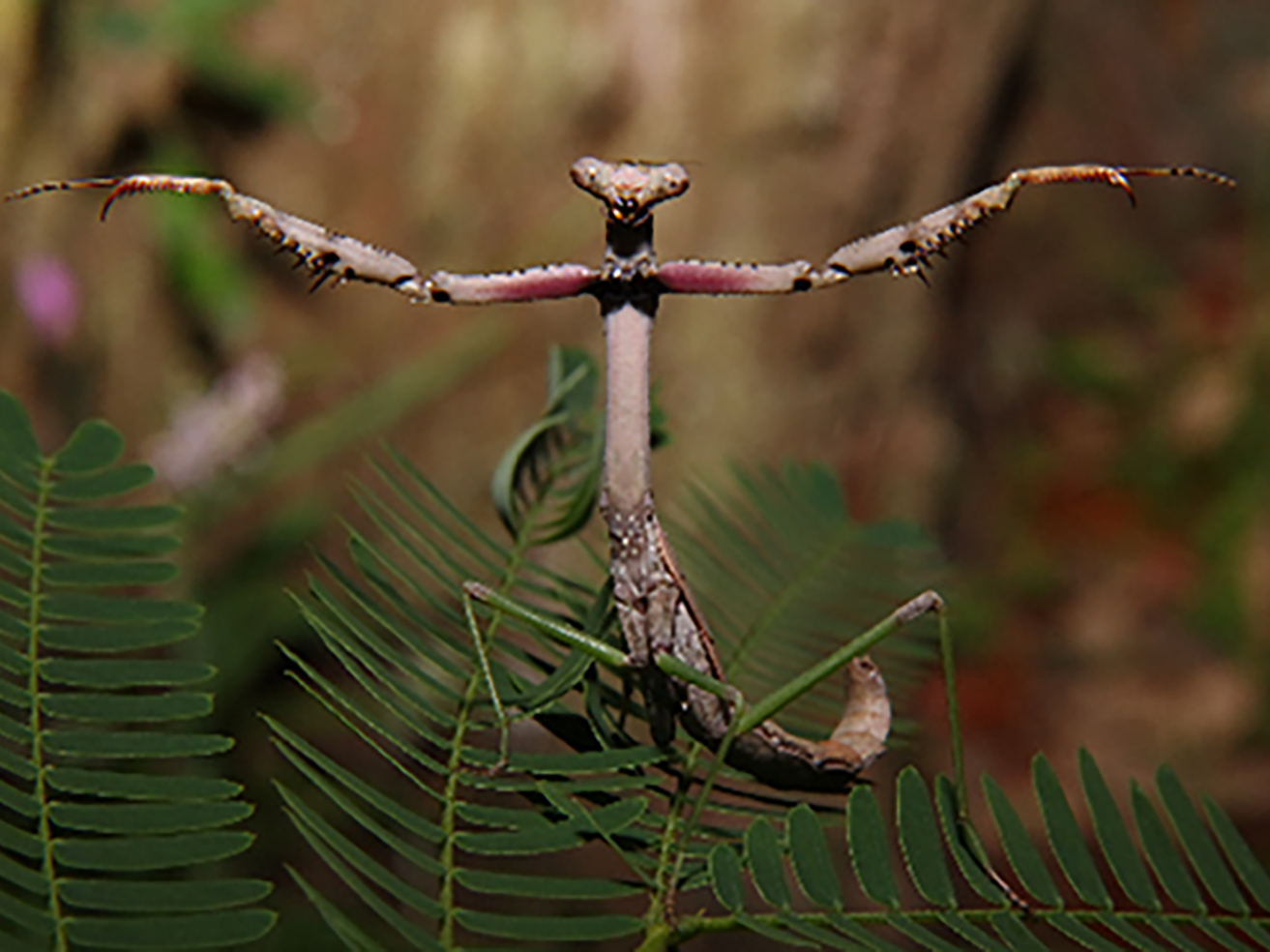
Mantids can be found in areas with mild winters and sufficient prey availability. Mantids spend most of their time in gardens, forests and other vegetated areas. One of the most common species found throughout the U.S. and Canada is the European mantid, Mantis religiosa (Figs. 1, 6). Adults can be brown or green in color with a black spot on the forelegs, and range from 50-65 mm in length. The European mantid actively feeds during the day, and prefers areas with mixed vegetation. Another common species is the Chinese mantid, Tenodera aridifolia (Fig. 7). Adults can be pale green or tan, and range from 65-85 mm in length. Chinese mantids prefer meadows and gardens. The Carolina mantid, Stagmomantis carolina, is also common in warmer climates. Adults range from 48-57 mm in length, and are dusty brown, grey or green in color. Carolina mantids are commonly found in meadows and gardens, on herbs, and low shrubs.

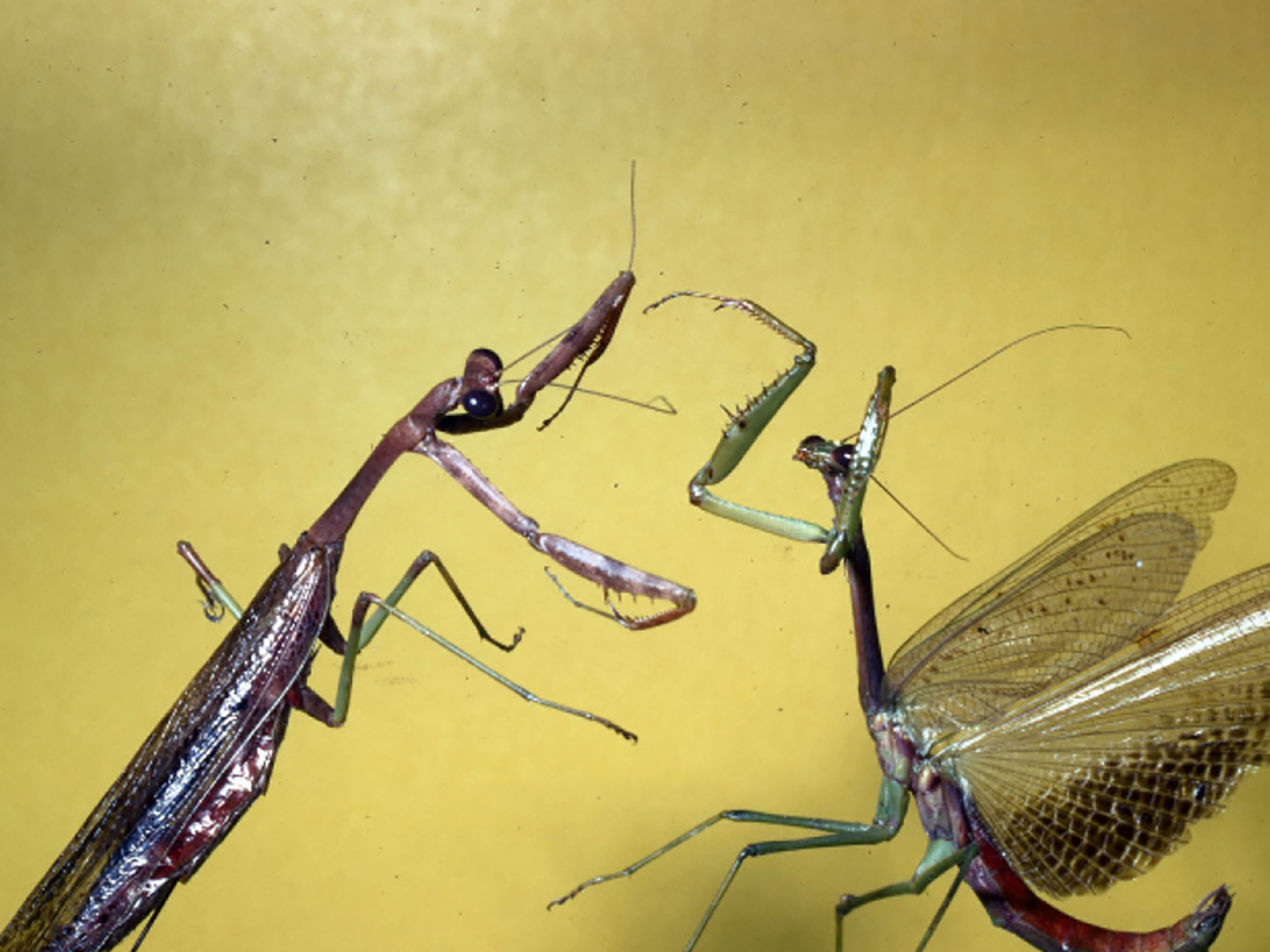
Related Research




